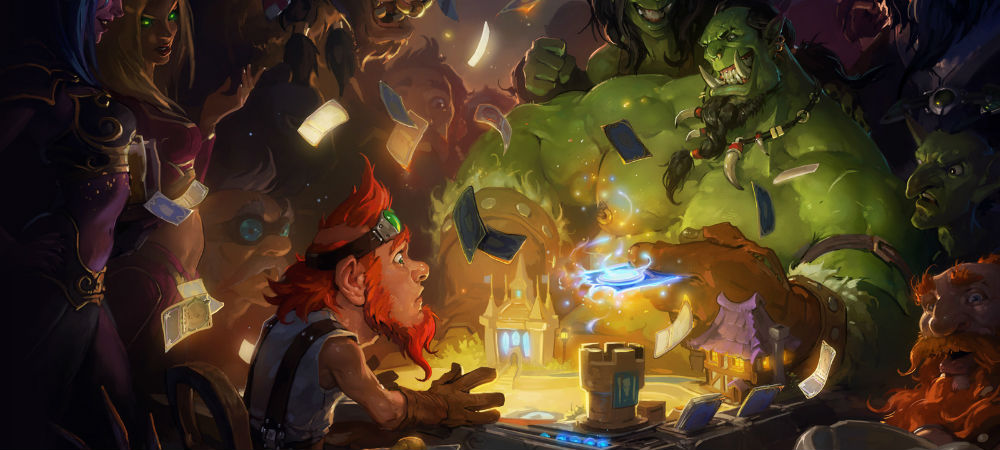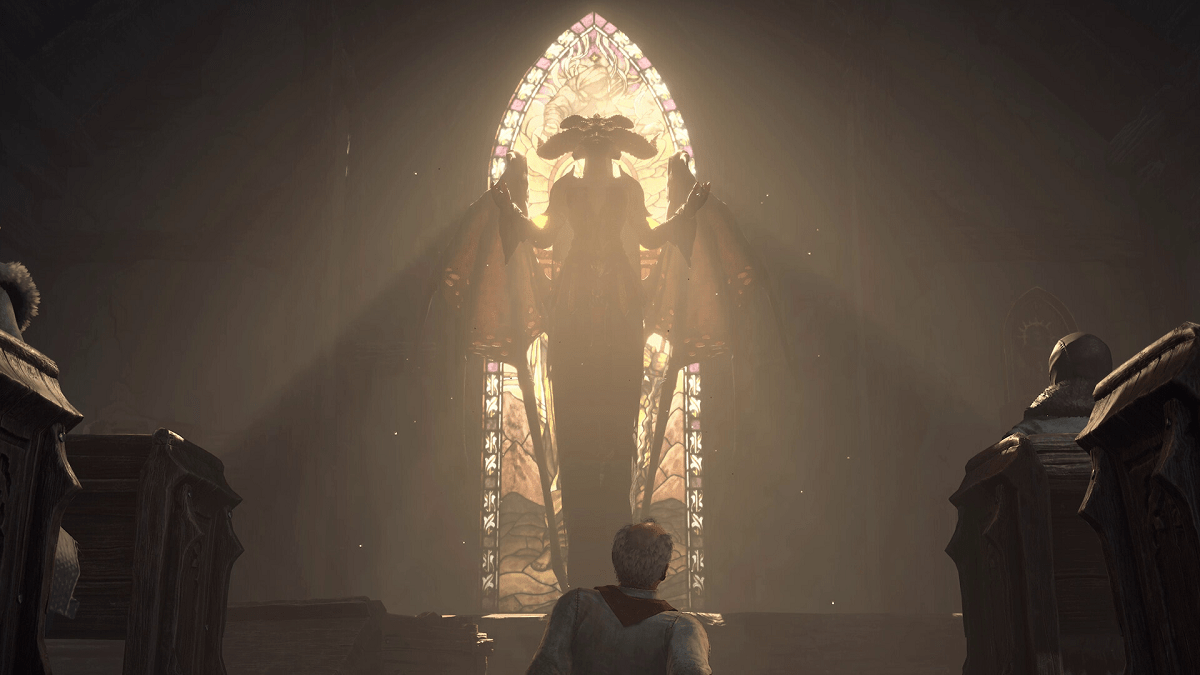Blizzard’s trump card
I never got into Magic: The Gathering. Plenty of my friends did, but I couldn’t afford countless booster packs or starter decks, and my mom wouldn’t drive me to the seedy local comic book store to play against frightening high schoolers.
I loved the concept of trading card games, though. I collected Pokémon cards like any other red-blooded American child of the ‘90s, and even dabbled in Yu-Gi-Oh for a very dark four months. Hearthstone: Heroes of Warcraft isn’t the first videogame to attempt to do the same thing as Magic, but it’s easily one of the best.

Hearthstone: Heroes of Warcraft (Android, iOS, Mac, PC [reviewed])
Developer: Blizzard Entertainment
Publisher: Blizzard Entertainment
Released: March 11, 2014 (Mac, PC) / TBA (Android, iOS)
MSRP: Free-to-play (with microtransactions)
Hearthstone was announced at PAX in 2013. The concept was simple: it was a trading card game based off of the characters of World of Warcraft. It entered a closed beta, then an open one, and finally on March 11th it was officially released. Hearthstone is free-to-play, and fortunately it means it. The game doesn’t feel like it’s pay-to-win at all, and even some of the top players have never put a penny into it.
I went into the Hearthstone knowing “it played sort of like Magic but with WoW characters” and nothing else. Having not much experience with either properties, I feared that much of the game would go over my head. You’re started off with a tutorial. You play as the mage Jaina Proudmore, one of the game’s nine different hero classes each with their own unique ability and cards.
The rules are simple: use your mana crystals to summon minions and cast spells to reduce the enemy hero’s health to zero. Each turn you get a little more mana, so by the end you can theoretically summon your most powerful cards. Hearthstone walks you through the simple premise in a very (almost too) step-by-step way. The basics are easy to understand, but where the real fun comes in is figuring out how all the different cards of your deck could work together.
After a few matches that you can’t possibly lose, you are set up to unlock the other eight classes or play against other players in standard matchmaking. On top of that once you unlock a class you can level them up by playing matches, unlocking class-specific cards to build a more powerful deck. You’ll want to unlock the characters, and ideally level them up so you can find which class works best for you.
Like other card games you can play a hero like the Hunter, and go for early “death by numbers” wins or you can play a class like the Druid and go for late-game “control” wins. You will spend hours upon hours building and tweaking your decks, and when you get new cards you might even decide to rebuild it from scratch. The best part is it always feels like you are making progress.

There is a lot of variety there and it really feels like you can win with any strategy as long as you’re able to pull it off. Of course, it being a card game, luck is involved and it can get frustrating when you can’t pull “that one card that totally would have let you win.”
I personally enjoy playing almost every class, each of them having a different style. The priest is all about stealing cards or minions from the opponent, the paladin is all about keeping himself alive so he can unleash tons of late-game damage. You might think you’ve found “your class” right away, but make sure to play around with all of them and you’ll be pleasantly surprised like I was.
Once you have unlocked all the heroes you have the majority of the game open to you. You can play ranked or unranked matchmaking, build your deck, buy packs, or play in the arena. The matchmaking is quick — it takes about 10 seconds to get matched up and usually matches take 5-15 minutes. Players have 90 seconds per turn, but you hardly ever need to use that much time. There is no player chat, but you can use six built-in emotes ranging from “greetings” to “threaten.”
The ranked matchmaking starts you at rank 25, forcing players to work their way up into the higher “competitive” bracket. One neat thing Blizzard does is make Hearthstone feel like a physical card game. Your cards lift off of the table and physically ram into the target you are attacking and everything shakes a little bit when they collide, and the way you open booster packs is reminiscent of actually opening up a physical pack of cards.
As you play you complete daily quests, such as “win three games with X class” or “cast 40 spells.” Completing these give you gold, which you can use to either buy booster packs or buy entry into the arena. You can, of course, buy booster packs using real money. Two packs will cost you $3, or you can pick up 40 packs for the low low price of $50. Each pack contains five cards, either neutral (usable by all classes) or class-specific and is guaranteed to contain at least one card that is rare.

The arena is my personal favorite part of Hearthstone. After gaining entrance by paying either 150 gold or $1.50, you choose one of three random heroes. Once you have chosen you are presented with three cards. You choose one, it goes into your deck and you are presented with three more cards. You do this until you have a full deck of 30, and then start battling other random opponents. The cards you are presented with aren’t always great, but that’s the fun of the arena mode because chances are that the person you are playing against had the same problems you did.
There is, of course, the chance that they got super rare cards known as legendaries and will completely crush you but at the same time they never might draw them. Everyone is on a (somewhat) level playing field in the arena. As a newbie you feel like you have a shot at beating even the most experienced players. After you lose three games with your deck you win prizes based on how many wins you managed to rack up. You get at least a deck, and either some gold, random cards, or dust for crafting; so it makes sense that instead of buying decks you should spend your gold on the arena.
While building your decks you can also craft any card you want from dust. You get dust by winning it in the arena, or destroying cards of your own. You can have at most two types of any card in a deck, so it makes sense to get rid of all your spares. The game doesn’t do a great job of explaining how the system works, so if you don’t do a little research on the subject beforehand you might craft some crummy cards or accidentally destroy some of your good ones.
Hearthstone has some other problems when it comes to explaining mechanics. There is only so much space on a card for text, so a lot of time it’s hard to figure out exactly what is going to happen when you do it. One example is that there are certain “statuses” that minions can have, causing them to act differently. One of these is “stealth,” which means it cannot be attacked until it attacks first. Another is “taunt,” which means you have to attack that minion before any others. What happens, then, if you give a stealthed minion taunt? Well it makes it so you can attack it, but you would have no way of knowing that until you tried it.

Another shortcoming is the humor, or lack thereof. Hearthstone tries to be funny in the tutorial, and it is if you’re the kind of person who thinks Charlie Sheen references are funny in 2014. In the rest of the game there isn’t much humor at all, which makes the places that try and fail even more noticeable. It does do a good job of keeping to the source material, though. There is a legendary card named “Leeroy Jenkins” after the popular WoW meme.
Blizzard has come out and said that it plans on supporting the game for a long time. It’s working on “adventures,” which are single-player campaigns that will feature new “boss” characters and upwards of 100-200 new cards total. If the studio treats Hearthstone any way like it did WoW, then this should mean there will be plenty of content to come. Also, Blizzard has committed to consistently balancing the game through patches.
Overall Hearthstone is a lot of fun to play, and has potential to be a game that stays around for a long time. While it may not be as complicated as an actual collectible card game, or have the appeal of showing off your collection to your friends, it is a great videogame that has minimal issues and is in a neat package, so it would be foolish to try to compare it to something it’s not trying to be.





Published: Mar 14, 2014 04:00 pm